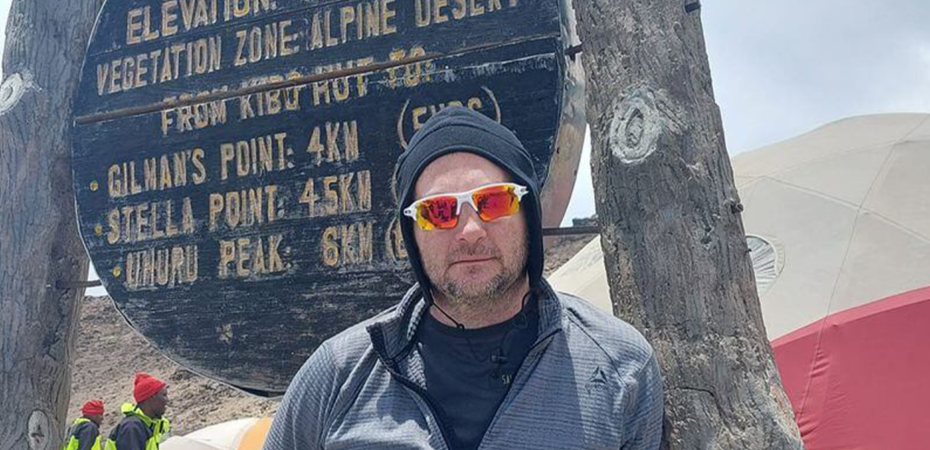Would you climb a mountain to help others? Would you do it while you were feeling unwell? That is exactly what Cleveland-based Christopher Farrenholz (International and European Politics, 2009) did to help bring a safe water supply to a village in Tanzania as part of the Waterboys’ Conquering Kili 2023 climb of Mount Kilimanjaro. Here, he shares his diary of the adventure.
Current treasured object: the ability to do as I wish for the most part though if it is a physical object then perhaps my newly acquired Columbus Crew MLS Cup Champion team autographed scarf.
Song of the moment: Nahko – Warrior People.
First thing I noticed when I woke up: it is cold.
———————————————————
We had a team of 12 climbers with a support staff of three, and five members from Worldserve International, who work in-country actually organising the work to make the water wells reality, from site surveys to actual drilling and well maintenance.
We met up in Amsterdam for the connecting flight to Tanzania. For the first few days, we visited Maasai villages in dire need of clean water.
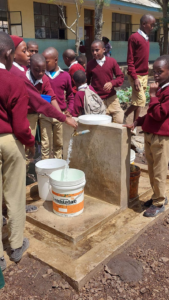
One water source was a pond that showed evidence of elephants visiting the previous evening, with dung and trampled vegetation all around. Seeing that showed us how dangerous it can be to share a water source with wildlife.
The next day, we attended a ribbon-cutting ceremony for a recently completed well at a local school, with 3,000 students served.
We were greeted as ‘water warriors’ to a lot of singing and dancing and various presentations. It was as if we were walking into an NFL stadium, with everyone screaming and trying to high five and fist bump us along the way in.
We also planted trees with the students — one for each climber. I was also randomly offered an ice cream by one of the students. This was a very moving experience for me.
After this, we went on a mini half-day safari to Arusha National Park and did a gear check before our departure for the mountain early the next morning. It rained for only 15 minutes that day.
Unfortunately, I spent the night prior to the start of the climb being very unwell – possibly due to the ice cream, but no one knows for sure. Even feeling quite ill, I set off with my fellow climbers for a three-to four-hour bus ride to the start of the Rongai Route on the back side of Kilimanjaro.
Day One
The first day’s hike was through rainforest for about three hours until we reached Camp Simba. Upon arrival, our team of porters greeted us with a welcome dance (this happened daily at each camp).
Then we set out to eat in our mess tent. Meals generally consisted of a vegetable soup starter, rice or other starch with a meat stew poured over top, followed by fresh fruit dessert.
We slept two to a tent in pop-up dome tents on cots. My tent mate was a former infantry officer who served in Afghanistan and now resides in Nashville. Along the way, we encountered large, colorful caterpillars and some chameleons.
Day Two
We climbed first to a cave, followed by another three-hour march up the mountain, during which we first caught glimpse of the summit.
Upon reaching camp, our former Special Forces Green Beret medic that happened to be on the team determined that a skin infection I developed on my back had to be cut and drained to avoid any worsening of my condition.
So, on a picnic table, an open-air surgical procedure was performed. No anesthesia, whiskey or even a stick to bite. I felt as if these were Civil War days.
The common saying from our guides was ‘pole, pole’ (sounds like poleigh, poleigh), which means slowly, slowly … the African way, as we were not in a hurry, but the pain in my back and general feeling of malaise I was experiencing was more like ‘let’s get this over with so I can rest in camp.’
This was possibly my hardest day — and they kept saying how much harder the final summit day would be. He was beleaguered and very uncertain at this point if he would even be allowed to continue.
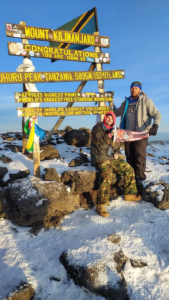
Day Three
Another three-hour climb, followed by an acclimation hike another two hours, then back down to camp for lunch and rest.
Had to drain and clean the wound daily moving forward, but each day it slightly improved. I was experiencing flu-like symptoms the entire climb in addition to the open wound.
We had hail and winds all afternoon. I just laid in the tent for the most part outside of mealtimes after a short walk around the main campsite area.
The peak had obvious snow accumulation. During the night, I awoke cold and looked through all my bags to find my warm fleece, got frustrated when l couldn’t find it, and then realized I was already wearing it.
My sleep was not good, as the wind, other climbers coming and going from tents with loud zippers, and my constant need to blow my nose kept me awakening throughout each night.
Day Four
We climbed another five hours to Kibo hut (15,000 feet) which is base camp for the summit bid (19,000-plus feet). Upon arrival, we ate and went to sleep, as our summit bid would begin at midnight. We would be awakened at 11 p.m. for a meal before climbing to the top.
We had a snowstorm this evening and the clouds were low.
Day Five
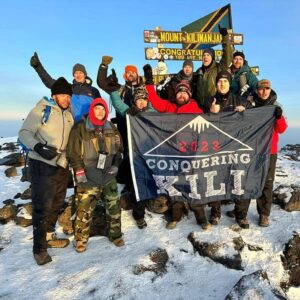
Awoke, ate and set off in the cold, dark night, climbing seemingly endless switchbacks with very few short, three- to five-minute breaks for water, snack or layer redistribution as we climbed.
Initially, I was fairly warm, but as we climbed, the (temperatures) dropped and I added layers. The fresh, trampled snow made the going quite slippery, and each step up slid a half step back a lot of the time.
Each step seemed slightly difficult, and at about 17,000 feet, one of our climbers had to turn back. Every time I felt like I wanted to turn back, I knew I had gone that far already, so why not just a bit further.
Gilman’s Point, which is the lip of the crater and the point at which Vince Young turned back on a previous year’s climb, I thought, ‘Well, if I can get there, that is something.’
Upon reaching Gilman’s point, the sky started to lighten and I knew I was still two hours from the summit. But the climb was essentially over, and the next section to the summit was a crater rim walk.
I continued on all the way to the top, reaching with the remainder of the team for photos and to watch the sun rise over the crater and glacier. The colors of the orange sky were vivid, as we were above cloud level and it seemed like we could see forever.
The glacial layers were vibrant shades of white and blue and especially striking, knowing we could be some of the last to see these like this. I grabbed a photo with Jabaal Sheard and a CLE Browns pennant at the summit and generally enjoyed the feat.
Our mountain guide, Moses, wanted a photo with me, saying it was amazing that I made it, saying he had never had someone as sick as me and have surgery en route, let alone succeed to summit.
But it is literally just keep going, and I had a lot of motivation to do so from all the people who have supported me with fundraising, to those that were lost for whom I had dedicated myself to do this since they no longer could.
It wasn’t easy, but I wasn’t taking myself out of the fight.
Now we turned back and headed down into the sun. I was first of the team down as the guides released us to go down at our own pace and I left ‘pole, pole’ to die on that hill alone as I raced down to get the most time to get some sleep at base camp before we again set off after lunch to get down below 12,000 feet elevation.
I learned later that the support team off the mountain had also determined that they had no faith I would make it to the summit – and to that point they weren’t even aware of the surgical procedure.
Chris Long said he was 60/40 I wouldn’t make it and exclaimed he wanted to get me a T-shirt that read ‘From Sepsis to Summit.’ And others said I was the comeback climber of the year.
“We all celebrated our accomplishment in the way any team does — by poking fun at each other along the way,” he said.
Day Six
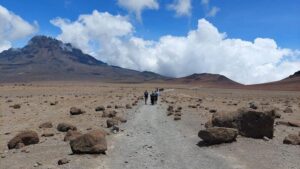
On the sixth day, we hiked to the bottom, legs and bodies tired but enjoying the rainforest, where we saw some monkeys and waterfalls. The lush habitat was nice to walk through.
Upon arrival, we all enjoyed a well-deserved shower before a buffet supper, where we were joined by Maasai warrior dancers and the commissioner of Kilimanjaro National Park, who joined we climbers in donning traditional Maasai robes. Local television news did interviews.
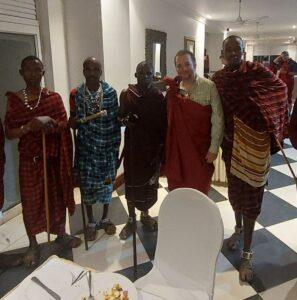
I wrote a short stanza to memorialize the accomplishment:
“Atop the roof of Africa
Watching the rise of the sun
Standing upon the snows of Kilimanjaro
I feel that I have won.”
———————————————————
All photos courtesy of Christopher Farrenholz
Find out more about Waterboys
Return to Enlightened Issue 06
All opinions expressed are those of individuals and do not necessarily reflect those of the University of Edinburgh.
(Christopher Farrenholz)
(Christopher Farrenholz)

